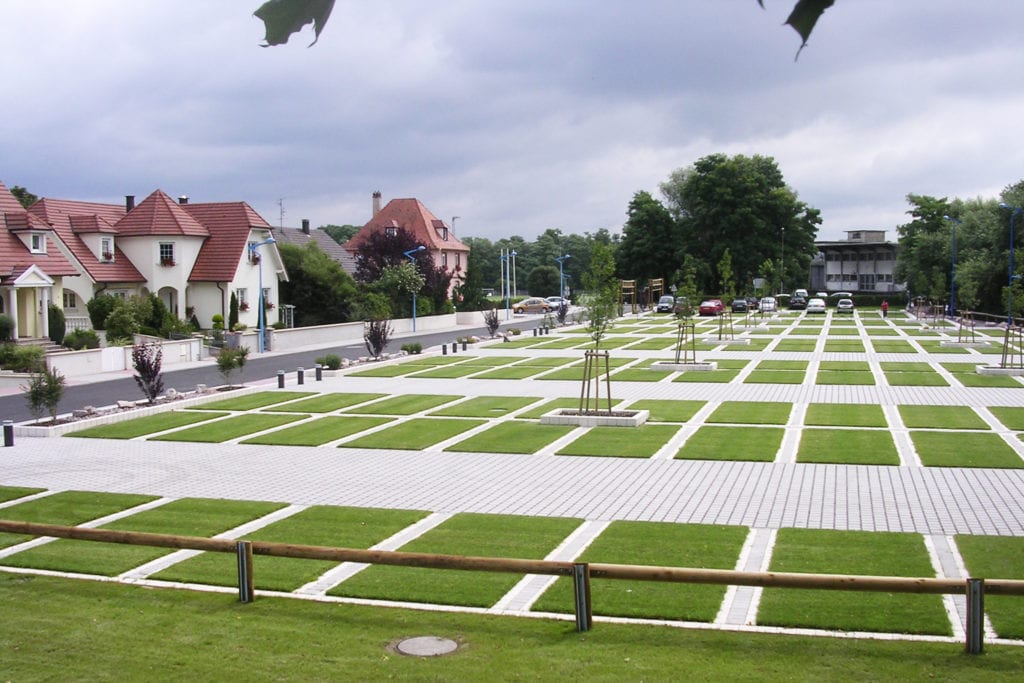LID Permeable Paving and the Environment- Manage Stormwater On Site
Most people will agree that climate change is real and is one of the contributing factors to the changing weather patterns that are found world-wide. Until now, most of the reactions have been reactive; trying to deal with the damaging effects of flooding, trying to cool the earth and reverse the heat island effect or trying to reduce the pollutants that are entering the natural water bodies.
There has not been the luxury of time to be proactive, to think about ways to avoid the problems before they develop. Realistically it means looking at the current protocols and procedures to decide how they can be adapted, on both a site specific level and a global level, to the changes that are occurring.
Ontario Becoming a Leader in Green Infrastructure
Ontario has become a leader amongst the nations in relation to including green infrastructure as the norm and focusing on storm water management as a way to help control the effects of the changing weather patterns.Green roofs have become the norm and are included on all new buildings in Toronto. The landscape of the City is changing which is pleasantly apparent when looking down upon the City from above. The green roofs help to manage storm water, while adding to the cityscape in a positive, calming manner. The roof top areas can often be enjoyed by the residents and staff of the buildings and have even been used to grow vegetables. Provincial storm water guidelines are changing and hence, new technologies are being added as options to supplement green roofs and increase the amount of storm water that can be captured on site in lieu of entering the storm sewer infrastructure.
Low Impact Development (LID) Technologies Becoming the Norm in Residential and Municipal Areas
Low impact development (LID) technologies are becoming the norm for residential areas as well as community and municipal areas. Raingardens are being promoted as a way to not only help control storm water where it lands, but also to hold additional water that has pooled in the raingarden area from surrounding solid surfaces. The raingardens add to the green space and many have even been constructed to double as pollinator areas encouraging the bee population. Rain water harvesting and rain barrels are another way that rain water is captured, and held until it can be reused, reducing the volume that enters the storm sewers. Many municipalities have rain barrel programs for residents to encourage them to increase the water they hold onsite, while decreasing the rain water that needs to be dealt with. Bio retention areas and bioswales are another technique that is becoming more and more popular throughout Ontario, helping to manage storm water on site while working towards reducing the damaging effects of flooding that have been more and more common throughout the province. Permeable paving is another such LID alternative that will not only help manage storm water where it lands, but can also help ensure the land is used in a cost effective and efficient manner. There are many different types of permeable paving available, which all use the same principals of allowing the surface to be used for vehicular access while holding storm water beneath the surface until it can either percolate into the ground or evaporate. Pervious surfaces differ in many ways including infiltration rates, maintenance needed, cost, ease of installation, and weight bearing capacity.
Ecoraster – an LID Permeable Paving System Manufactured in Ontario
Products such as Ecoraster are greater than 95% “open” or permeable and can support the heaviest of loads even in areas of extreme temperatures, both hot and cold. Ecoraster, a German engineered product which is now manufactured in Ontario, is straight forward and easy to install, requires minimal maintenance and is not only affordable, but also carries a 20 year warranty. Ecoraster is a permeable paving system which can be used for residential, commercial and industrial applications. With so many wonderful and effective options available, it is much easier for the Province to be proactive in their approach towards storm water management and green infrastructure. Although there are many supporters of green infrastructure and LID alternatives Province-wide, we still have a long way to go. Clients looking to include permeable paving in lieu of traditional solid surfaces are being met with pushback in the zoning and permitting offices including existing by-laws which state commercial parking surfaces need to be “paved” and you are forbidden from parking on organic material. People need to feel supported when they are making changes and the support must come from the “top” down. Municipalities must become unified in their approach towards LID and green infrastructure and must start using as well as promoting it. Residents working to include green alternatives should be encouraged and rewarded, which will not only help them make the changes but will also inspire others to follow their lead.
LID Permeable Paving Canada is the exclusive distributor of Ecoraster in Ontario, Canada. For further information call us or fill out our contact form to learn more. We would be pleased to schedule a time for an informational presentation or arrange to have you visit our different installation sites.





